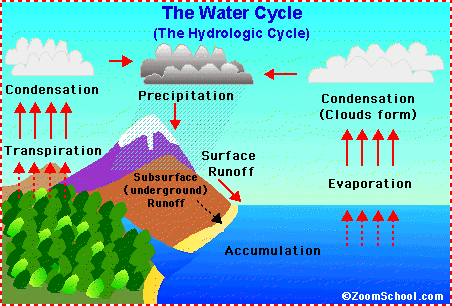martes, 7 de abril de 2015
VOLCANOS
| Volcano |
A volcano is a place on the Earth's surface (or any other planet's or moon's surface) where molten rock, gases and pyroclastic debris erupt through the earth's crust. Volcanoes vary quite a bit in their structure - some are cracks in the earth's crust where lava erupts, and some are domes, shields, or mountain-like structures with a crater at the summit.
Magma is molten rock within the Earth's crust. When magma erupts through the earth's surface it is called lava. Lava can be thick and slow-moving or thin and fast-moving. Rock also comes from volcanoes in other forms, including ash (finely powdered rock that looks like dark smoke coming from the volcano), cinders (bits of fragmented lava), and pumice (light-weight rock that is full of air bubbles and is formed in explosive volcanic eruptions - this type of rock can float on water). Volcanic eruptions can cause great damage and the loss of life and property. The Word Volcano:
The word volcano comes from the Roman god of fire, Vulcan. Vulcan was said to have had a forge (a place to melt and shape iron) on Vulcano, an active volcano on the Lipari Islands in Italy.
Extreme Volcanoes:
The largest volcano on Earth is Hawaii's Mauna Loa. Mauna Loa is about 6 miles (10 km) tall from the sea floor to its summit (it rises about 4 km above sea level). It also has the greatest volume of any volcano, 10,200 cubic miles (42,500 cubic kilometers). The most active volcano in the continental USA is Mt. St. Helens (located in western Washington state). The largest volcano in our Solar System is perhaps Olympus Mons on the planet Mars. This enormous volcano is 17 miles (27 km) tall and over 320 miles (520 km) across.
THE WATER CYCLE
The Water Cycle

The Water Cycle (also known as the hydrologic cycle) is the journey water takes as it circulates from the land to the sky and back again.
The Sun's heat provides energy to evaporate water from the Earth's surface (oceans, lakes, etc.). Plants also lose water to the air (this is called transpiration). The water vapor eventually condenses, forming tiny droplets in clouds. When the clouds meet cool air over land, precipitation (rain, sleet, or snow) is triggered, and water returns to the land (or sea). Some of the precipitation soaks into the ground. Some of the underground water is trapped between rock or clay layers; this is called groundwater. But most of the water flows downhill as runoff (above ground or underground), eventually returning to the seas as slightly salty water.
WHY ARE THE OCEANS SALTY?
As water flows through rivers, it picks up small amounts of mineral salts from the rocks and soil of the river beds. This very-slightly salty water flows into the oceans and seas. The water in the oceans only leaves by evaporating (and the freezing of polar ice), but the salt remains dissolved in the ocean - it does not evaporate. So the remaining water gets saltier and saltier as time passes.
The Water Cycle (also known as the hydrologic cycle) is the journey water takes as it circulates from the land to the sky and back again.
The Sun's heat provides energy to evaporate water from the Earth's surface (oceans, lakes, etc.). Plants also lose water to the air (this is called transpiration). The water vapor eventually condenses, forming tiny droplets in clouds. When the clouds meet cool air over land, precipitation (rain, sleet, or snow) is triggered, and water returns to the land (or sea). Some of the precipitation soaks into the ground. Some of the underground water is trapped between rock or clay layers; this is called groundwater. But most of the water flows downhill as runoff (above ground or underground), eventually returning to the seas as slightly salty water.
WHY ARE THE OCEANS SALTY?
Oceans cover about 70% of the Earth's surface. The oceans contain roughly 97% of the Earth's water supply. |
Suscribirse a:
Entradas (Atom)
